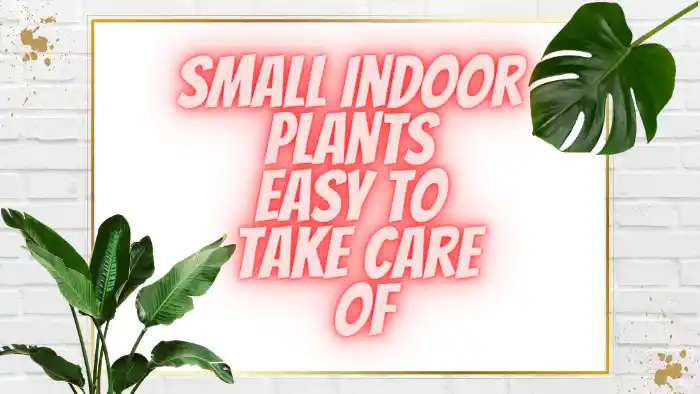The allure of purple leafed indoor plants lies in their striking appearance, which adds a burst of color and vitality to any room.
These captivating plants come in a variety of shades and sizes, making them an excellent choice for both beginners and experienced plant enthusiasts.
Why Choose Purple-Leaved Indoor Plants?
Purple leafed plants are not just aesthetically pleasing; they also hold symbolic significance.
The color purple is often associated with creativity, royalty, and tranquility, making these plants a wonderful addition to spaces where you seek inspiration and relaxation.
Popular Varieties of Purple-Leaved Plants
- Purple Wandering Jew (Tradescantia zebrina)
- Purple Passion Plant (Gynura aurantiaca)
- Purple Velvet Plant (Gynura sarmentosa)
- Purple Oxalis (Oxalis triangularis)
- Purple Shamrock (Oxalis regnellii)
- Caring for Your purple-leaved Plants
Light and Placement
Purple-leaved plants thrive in bright, indirect light. Avoid exposing them to direct sunlight for prolonged periods, as it may cause their vibrant foliage to fade.
Watering Routine
Keep a standard watering plan, permitting the dirt to dry out marginally between waterings. Overwatering can prompt root decay, while underwatering can make the leaves shrivel.
Temperature and Humidity
These plants prefer moderate temperatures between 65-75°F (18-24°C) and appreciate higher humidity levels. Mist the leaves occasionally to mimic their natural habitat.
Soil Requirements
Plant purple leafed varieties in well-draining soil enriched with organic matter. A combination of fertilized soil, perlite, and peat greenery functions admirably.
Pruning and Maintenance
Trim back leggy growth to encourage bushiness, and remove any dead or yellowing leaves to maintain the plant’s health and appearance.
Benefits of Having Purple Foliage Plants Indoors
The presence of purple leafed plants indoors offers more than just visual appeal. They can improve air quality, reduce stress, and create a calming ambiance.
Using Purple-Leaved Plants for Interior Design
Color Harmony and Contrast
Purple foliage creates a striking contrast with other colors, adding a dynamic element to your interior decor.
Focal Points in Decor
Large purple leafed plants can serve as eye-catching focal points, enhancing the overall aesthetics of your room.
Creating Tranquil Spaces
Incorporate purple plants in areas designated for relaxation, such as reading nooks or meditation corners, to promote a sense of tranquility.
Boosting Air Quality with Purple Foliage
Purple leafed plants, like many other indoor plants, contribute to better air quality by absorbing toxins and releasing oxygen.
Addressing Common Concerns About Purple Leafed Plants
Are They Safe for Pets?
Most purple leafed indoor plants are non-toxic to pets, but it’s still best to keep them out of your furry friends’ reach.
Do They Require More Care?
While they have specific care requirements, purple leafed plants are not overly demanding and can thrive with proper attention.
Can They Thrive in Low Light Conditions?
Some purple leafed plants are adaptable to lower light conditions, but their color intensity may be reduced.
How to Prevent Discoloration?
Maintain the right balance of light and avoid exposing your plants to temperature extremes to prevent leaf discoloration.
Where to Find and Purchase Purple Leafed Plants
You can find purple leafed plants at local nurseries, garden centers, or even online plant shops. Make sure to choose healthy, well-potted specimens.
Conclusion
Purple leafed indoor plants offer a unique and captivating way to bring the beauty of nature into your living spaces.
Their stunning foliage, coupled with their various benefits and ease of care, makes them a fantastic choice for both seasoned plant lovers and those just starting their indoor gardening journey.
So, why wait? Add a touch of regal charm to your home with these enchanting plants.
FAQs
Are purple leafed plants hard to care for?
Purple leafed plants have specific care needs, but with proper attention, they can thrive in your home.
Can I keep purple leafed plants in low-light areas?
While some varieties can tolerate lower light, they may not exhibit their full vibrant coloration.
Do purple leafed plants flower?
Yes, some purple leafed plants produce small, delicate flowers that complement their foliage.
How often should I fertilize my purple leafed plants?
Prepare each 4 a month and a half during the developing season with a reasonable fluid compost.
Where can I get more information about caring for specific purple leafed plant varieties?
You can find detailed care guides from reputable gardening websites or consult with local plant experts.
I am a Horticulture graduate and passionate gardener with expertise in identifying, growing, and caring for plants, trees, and seeds. With a focus on sustainable practices, they aim to promote environmental awareness and appreciation for the natural world.








